
© Rachel Lee. (Click image for larger version)
Mark Morris Dance Group
Words, Quad, Water
★★★✰✰
New York, Brooklyn Bridge Park
25 September 2021
markmorrisdancegroup.org
www.brooklynbridgepark.org
On the Waterfront
September 25th in New York was one of those days, crystalline, inviting, that one associates with early Woody Allen movies, in which people walk, and talk, and gaze at the skyline with affection. Everyone was out enjoying the city. That includes the Mark Morris Dance Group, who presented a trio of dances, old and new, in a corner of Brooklyn Bridge Park overlooking New York Harbor and the Statue of Liberty. The performance was the opening salvo of the company’s latest season.
People sat on the grass in the sun watching the dancers, who wore thick-soled sneakers to protect their feet from the hard pavement below. If anyone can adapt to circumstance, it’s Morris’s no-nonsense dancers. They performed three short works, Words, from 2014; Quad, from 2019; and Water a new piece for the occasion.

© Rachel Lee. (Click image for larger version)
Words, a piece set to Mendelssohn’s Songs without Words, has been performed all summer. The simple combination of gestures, spinning, and patterning is like a listening guide to these pensive pieces for piano, played on keyboard by Colin Fowler. It’s one of Morris’s “neo-naïf” works, in which he leads you, with humor (and total lack of pretentiousness), into the structure of the music.
The other two pieces were new. Quad is an oddity, a “non-verbal” Beckett play made for TV in 1981, for which the playwright wrote out a detailed plan. Morris was asked to stage it for a Becket festival in Ireland in 2019. Four figures in cassocks walk in vertical, horizontal, and diagonal lines across and around a square, stepping aside nimbly when they cross paths with one of the other figures. First there’s one, then two, then three, etc, and then they decrease in number, and start over. Meanwhile the rest of the company sits on chairs, playing a variety of real and improvised instruments including cymbals, a gas tank, a water bottle, and a gong. The piece combines several of Morris’s obsessions: rhythm, patterning, variation, percussion. It also reflects his sometimes maniacal, dance-as-infinite-permutations-on-a-theme proclivities, more satisfying for the performers (and for Morris himself) than for the general viewer.
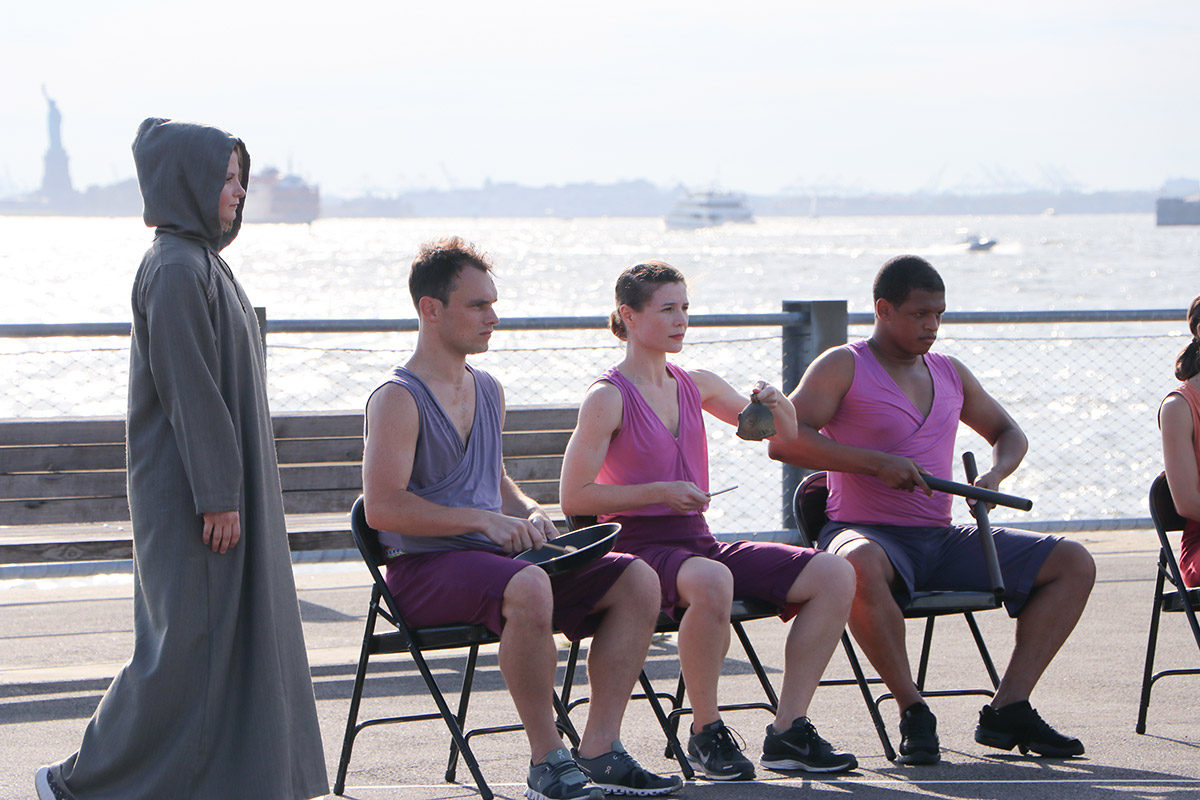
© Rachel Lee. (Click image for larger version)
I get the sense that Water, set to four sections of Handel’s wonderful “Water Music,” composed in 1717 to accompany a cruise up the Thames, is a work awaiting its full expression. For now, it is a sketch, in Morris’s pure music visualization vein. Like the music, it is elegant, even courtly. To Handel’s “Air,” the dancers line up to perform clean, crisp tendus and arabesques, arranging their hands and fingers with extreme, almost Baroque refinement. There is also cantilever partnering, reminiscent of Trisha Brown. In the first section, two lines of dancers dressed in sober black walk across the space, while in between them, a man lifts a woman in almost balletic lifts. As he carries her past the other dancers, they reach out to touch her ankles. The gesture is strangely moving.

© Rachel Lee. (Click image for larger version)
Who knows what the piece will become in time, once it moves indoors and, eventually, is performed to live musical accompaniment (here, a recording was used). The time for outdoor performances is drawing to a close. Theaters beckon.









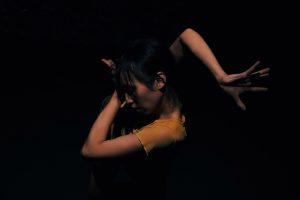
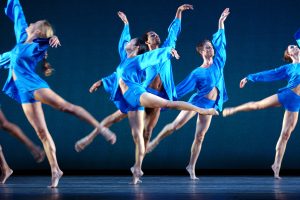
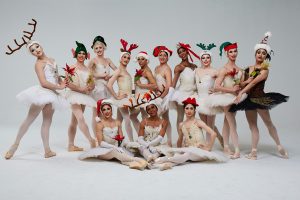


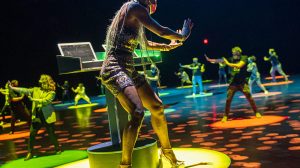
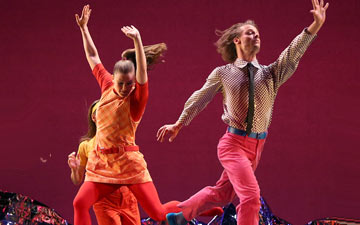
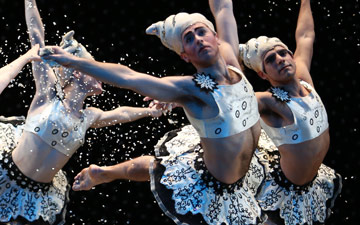
Your reference to the atmosphere evocative of early Woody Allen movies hit home with me. I can actually imagine this performance fitting into a scene from one of them, somehow!